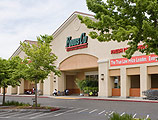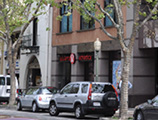Twenty years ago, I attended a real estate conference that featured a very impressive doctor as a keynote speaker. This Harvard doctor didn’t merely proclaim, but flat-out guaranteed that cancer would be cured within five years. Seven years ago, I chanced to sit next to Astro Teller and Sebastian Thrun at a luncheon. Teller and Thrun are certified tech geniuses: Teller was then running Google X and Stanford Professor Thrun had led the development of the robotic vehicle Stanley that won the 2005 Darpa Grand Challenge. When the conversation turned to driverless cars, I asked when they would be commonplace. Thrun replied, “In ten years, almost everyone will have an autonomous vehicle. Actually driving yourself will be like driving a car with a stick shift today, that is, an affectation.”
These prodigies were wrong. And it has been thus with nearly every futurist I’ve ever heard: bold prophecies later dashed on the rocks of reality. (The futurist’s dilemma is thorny; absent astounding predictions, he won’t get any bookings).
Why this prelude? Because today’s topic is the future. With this disclaimer—if the geniuses get it wrong, what chance do the B students have?—I’ll share my guess on big cities.
In short, Covid-19 is a chassis-busting speedbump, but we’re slowly pulling away from it. By year-end 2022, big cities will be back. Yes, certain etiquettes will likely change: Wary residents may wear masks in public (the convention in Asia for years), elevator capacities may be reduced and handshaking may be the new nose-picking, but full-throttled city life will resume. Why? To paraphrase Martin Luther King, the arc of history bends toward cities, toward density. Farmers have been kissing their mules goodbye and flocking to the city since the Industrial Revolution. The Spanish Flu didn’t change that and neither will Covid-19.
The big cities’ opportunities and allure are too great; they’re too much fun. If you’re from a small town with few prospects and you have any brains, talent or beauty, you can’t wait to pick your own Big Apple, whether that’s NYC, LA, Miami or Chicago. Yes, your company may allow you to work remotely from Anytown USA, but can you get promoted working in your PJ’s? Can you find the spouse of your dreams in a town with more 7-Elevens than street lights? Towns—hell, most states—lack the culture that the educated crave as a backdrop to their daily lives. They may not necessarily attend the opera, the symphony, a lecture series at the university or a Rembrandt retrospective at their world-class museum, but they like having them around. And judging by their attendance records, people love living close by the venues of the NFL, NBA and Major League Baseball.
Focusing the crystal ball on real estate, I think big city apartment buildings will lease at a Covid markdown for some time to come, but they will lease. At a sufficient discount, the less timid will rent high-rise apartments. There will be half as many restaurants doing twice their previous volumes. Hotels will be problematic; business travel may never fully return. If so, some hotels will likely convert to apartments. Empty office buildings will take a while to refill, but again, they will at the right discount. It may be that because of elevator and lingering contagion fears, central business district office space will trade at an enormous discount to walk-up suburban offices. But cheap enough, they will rent. On the other hand, I see few prospects for building new spec office buildings…or new apartment buildings until rents exceed their 2019 levels. Big city retail will suffer worse than its suburban counterparts because of the hassle of city shopping and Amazon’s seductive ease.
The discounts required to refill the cities may spark a minor renaissance. Cheaper housing and work space may allow the creative classes—the artists, writers, the gifted but not in a financial way—to return to the cities where the techies had squeezed them out. We could have a re- gentrification by the cool, making the big city even more alluring.
How will the tomorrow’s city be different? In small ways that are neither readily apparent nor easily predicted. Imagine this: While channel-surfing, you chance upon a comedy set, say, in Manhattan; after a moment, you try to figure out what year it’s supposed to be. Even if the setting is barely modern, you can’t carbon date it by looking at the clothes, the haircuts, the furniture, the apartments, the restaurants or even the outdoor scenes (Central Park is timeless). How do you date it? By looking at the gadgets. If the hero’s mobile phone looks like a Korean War walkie-talkie, you know you’re in the 80’s.
Putting aside the devices, tomorrow’s city will be scarcely distinguishable from that of 2019.






















